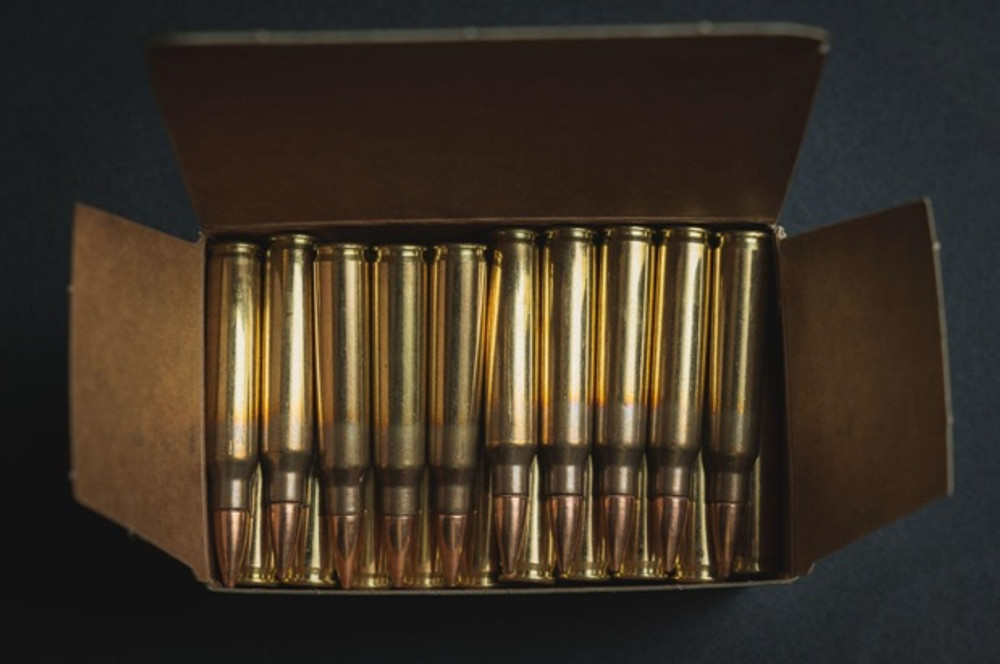As you may know, both the 5.56x45mm NATO and 7.62x39mm Soviet cartridges were developed as intermediate rifle cartridges, intended to be used in both infantry rifles and machine guns. The 7.62x39 is a bit older but both have long, illustrious histories and have served successfully around the globe. It is not to be doubted that at some point in history, the two came head to head.
Today, both are popular cartridges among civilians, where wide availability and relatively low cost keep them popular for training, target shooting, competition, and even hunting and defensive applications.
But make no mistake about it, the two are not the same. Let’s take a look at some of the most important differences between 5.56 and 7.62 full metal jacket ammo.
East vs. West: Battle of the Intermediate Cartridges
With 5.56 and 7.62 full metal jacket ammo, there are fierce proponents on both sides of the aisle. Fans of the 7.62x39mm love its superior stopping power. Fans of the 5.56 say that speed is superior (and it is), and the 5.56 definitely produces higher velocities that can create serious hydrostatic shock, not to mention that it is a lower recoiling round and shoots flatter and more accurately over greater distances.
But to break this down we will take a more analytical and less subjective approach considering muzzle energy and recoil, velocity, terminal ballistics, accuracy and effective range, as well as sectional density.
First, let’s talk about recoil. Objectively, both produce very little recoil when compared to cartridges like .308 Winchester and .30-06 Springfield. In the world of centerfire cartridges, 5.56 produces one of the lowest free recoil energies of all.
Typically, a 5.56 cartridge fires a bullet weighing between 55 and 62 grains, and a 7.62x39mm cartridge will fire a bullet around 123 grains - although heavier subsonic rounds are also available.
Depending on barrel length and rifle weight, average felt recoil for the 7.62 is about 8 ft-lbs vs. 5 ft-lbs (or less) than the 5.56. The 7.62 is heavier, but only by a hair, and recoil for both of these cartridges is extraordinarily light.
Now let’s talk muzzle energy and velocity. Considering a 5.56 FMJ round of 55 grains, we have a ballpark muzzle energy of roughly 1,200 ft-lbs and velocity of around 3,100 FPS. Contrast this with a slower, heavier moving 7.62 full metal jacket bullet of 123 grains, which will clock an average of 1,445 ft-lbs of muzzle energy and velocity of 2,300 FPS.
It is clear that the 5.56 is faster and produces less muzzle energy, but here’s the catch. At 200 yards, energy for the same 7.62 round will have dropped to about 650 ft-lbs, whereas the 5.56 round will retain 700. Beyond 200 yards, the 5.56 actually retains more energy and therefore power, let alone the fact that it is far flatter shooting, and far more accurate, at extended ranges.
In other words, there is a big trade-off here. Neither cartridge is better than the other. It’s all a matter of relative degrees. At closer ranges, the 7.62 will produce greater stopping power, but beyond 200 yards, accuracy and stopping power slip into the favor of the 5.56.
We must also consider sectional density, or SD, which gives a measure of how effectively a bullet will penetrate a target, given by its diameter and weight. The higher the sectional density, the better.
However, this metric is effectively a draw. The 7.62 full metal jacket round will be heavier and larger, but slower, than the 5.56, giving them nearly identical sectional density. Once again, it comes down to range and application.
It is equally important to keep the trajectory of the two cartridges in mind. An average 5.56 cartridge loaded with a 55 grain bullet will drop somewhere around 8.3” at 300 yards; a 7.62 full metal jacket 123-grain round will drop almost 30” at the same range when zeroed at 100, and subsonic rounds are even worse.

Add to this the fact that 5.56 is more accurate at greater ranges, and you have an idea of which cartridge is the better long-range shooter.
So, here’s what it boils down to:
- The 7.62 full metal jacket performs better at closer ranges when superior stopping power is necessary.
- The 5.56 FMJ is likely a better choice at longer ranges, beyond 200 yards, when greater accuracy is necessary, or at closer ranges when less recoil is desirable.
Ultimately, it’s not about one round being better than the other. You just have to keep their uses within the acceptable and appropriate limits.
Stock Up on 5.56 and 7.62 Full Metal Jacket Ammo Here
Regardless of which is your preferred caliber, we carry both and many others. Stock up on 5.56 and 7.62 full metal jacket ammo, check out our bulk ammo deals, and don’t miss our police trade-in specials while you’re here.

